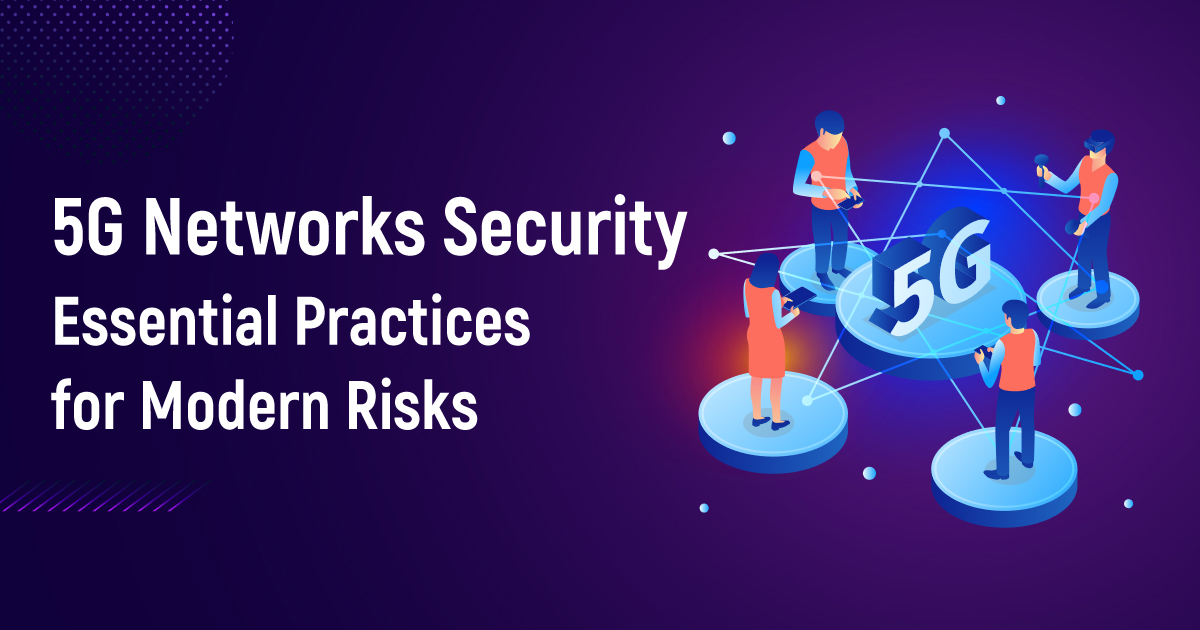The deployment of 5G networks marks a transformational change in telecommunications, offering unprecedented speeds, reduced latency, and improved connectivity. These developments support a range of applications, from automotive and smart cities to advanced IoT devices and immersive experiences. However, these developments present significant security challenges that must be addressed to ensure data integrity, privacy, and continued service.
Key Security Challenges in 5G Networks
Expanded Attack Surface
5G networks dramatically increase the attacks, with billions of connected devices and applications. Cyber threats can exploit vulnerabilities in network systems, IoT devices, and edge computing environments, increasing the number of vulnerabilities.
Network Slicing Risks
Network slicing allows multiple virtual networks on the same physical infrastructure, designed for different applications. Although this provides great flexibility, insufficient fragmentation can result in breakage that affects other rounds, posing a serious safety hazard.
Supply Chain Vulnerabilities
The complexity of 5G covers multiple products and vendors, increasing the risk of attacks on the supply chain. Protecting hardware and software from different sources is challenging, as damaged components can introduce vulnerabilities in the network.
Encryption Challenges
Although 5G supports end-to-end encryption, protecting data in transit is only one part of a complete security strategy. Consistent encryption across network components and services is essential, in addition to addressing vulnerabilities in encryption protocols.
Evolving Threat Landscape
The threat landscape for 5G is constantly evolving, with new threats and targeted attacks emerging. Staying ahead of these threats and adapting security measures accordingly is essential to maintaining a secure network.
Best Practices for Securing 5G Networks

-
Robust Authentication and Access Controls Implement strong authentication mechanisms and access controls, including multi-factor authentication (MFA) and strict access controls for network elements, to prevent unauthorized access.
-
Zero Trust Architecture Adopt a zero-trust model where trust is continuously verified. Segment the network, verify user and device identities, and enforce stringent access controls to mitigate internal and external threats.
-
Enhanced Network Slicing Security Ensure proper isolation and security for each network slice. Implement segmentation and isolation measures to prevent breaches in one slice from impacting others.
-
Strengthened Supply Chain Security Set stringent security requirements for vendors and conducted thorough assessments of all components and software. Secure the supply chain to prevent vulnerabilities from compromised components.
-
Comprehensive Encryption Apply end-to-end encryption across all network layers—data in transit, at rest, and during processing. Regularly update encryption protocols to address emerging vulnerabilities.
-
Advanced Threat Detection and Response Utilize advanced threat detection systems powered by machine learning and artificial intelligence. Continuous monitoring and automated response capabilities are crucial for effective threat management.
-
Regular Updates and Patching Maintain up-to-date software and firmware to protect against known vulnerabilities. Implement a robust patch management process to ensure timely application of security patches.
Building a Secure Future for 5G Networks
As 5G networks advance, addressing security challenges is crucial for protecting infrastructure, and sensitive data, and maintaining service continuity. By adopting effective security practices and remaining vigilant against emerging risks, businesses and network operators can ensure a secure and resilient 5G ecosystem. Embracing these best practices will enable the realization of 5G’s transformative potential without compromising network integrity and reliability.












